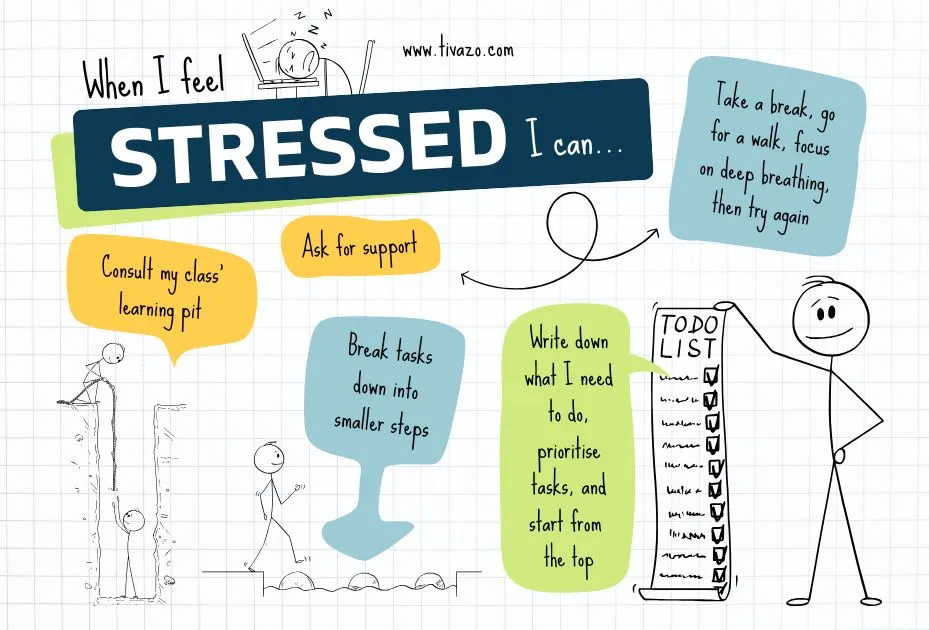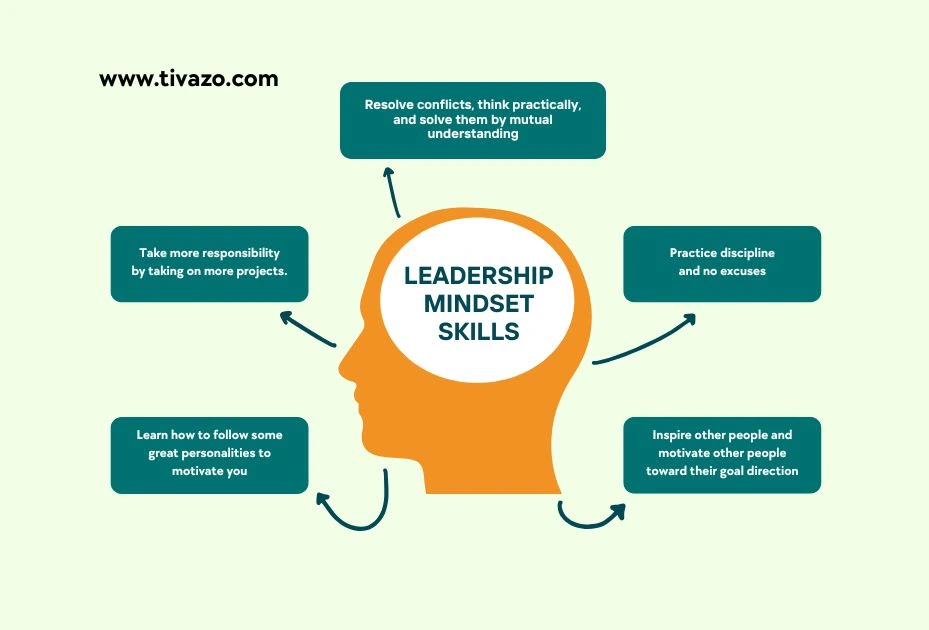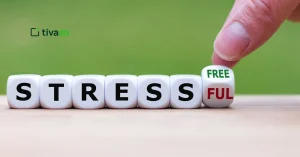Since we are so connected these days, the main events we worry about are job loss, changes in our relationships, or illness. Yet, studies now show that it’s usually the buildup of dozens of little stressors that affects our health the most. Microstress refers to the idea that uncomfortable events we face every day, if they happen regularly, eventually cause continuous stress and can have negative consequences for both body and mind.
Understanding that this happens to everyone is necessary to reach one’s best performance and well-being. People who achieve a lot at work are especially at risk of microstress because their jobs and situations are often demanding and pressurized. If organizations notice and react to the microstress effect, they often see increased productivity from employees, a lower risk of burnout, and happier workplaces.
What causes the microstress effect?
- Microstress describes small moments of stress we often face but usually don’t take seriously because they feel so small. A microstress could be an unclear email, a coworker who misses many meetings, or being bothered by endless notifications.
- Rob Cross, a professor at Babson College and a researcher, has done a lot of work on this kind of stress. His research clearly shows that small daily pressures can add up and become important. While significant stresses cause us to react and settle down, micro stresses go unnoticed by our brains and always leave us a little aroused.
- This happens when our bodies experience small stressors before we’ve had time to rest from the last one. Since microstress is always around, our bodies can’t settle into its rhythm easily, like with acute stress. If the stress response is turned on regularly, it can seriously harm our health and damage our performance.
How Organizational Stress is Caused by Thousands of Microtime Events
There is an expected order to the collection of micro stresses. We face various little stresses each day that we can usually manage without too much effort. Yet, stressful days and weeks add more and more pressure to our minds and bodies over time.

- For a highly successful person, each workday usually brings several urgent emails, driving in traffic while preparing for an upcoming speech, attending consecutive group meetings where critical decisions are put off, technical issues affecting video calls, and addressing clashes with staff who all have different important jobs to do. Every one of these situations triggers a brief activation of our stress response system.
- Institute for Corporate Productivity researchers found that the modern workplace typically sees 15-20 micro stressors happening every hour at peak times. For example, these issues can result from misleading instructions, a range of upcoming deadlines, technical issues, or mild disagreements between members. Our brain is good at dealing with each little stressor, but we get frazzled when we don’t have enough downtime between them.
- It’s especially challenging since small daily pressures lack the same completion or reward that we get from completing difficult tasks. We don’t appreciate getting through another round of emails or making it through a tough conversation. Instead, these experiences become less important while our stress systems stay partly switched on for the next little difficulty.
How Small Stress Can Affect Your Health and Your Productivity

- Constant exposure to microstress has lasting effects that are more serious than simple discomfort. Sustained stress leads to anxiety, trouble paying attention, emotional weariness, and ultimately burnout. Unlike dramatic acute stress, microstress shows as a mild and steady change in mood, power, and mental function.
- People who achieve high performance can feel their creativity drop, their ability to solve problems decrease, and may become quicker to annoy those around them, both on the job and outside of it. When the mind is always halfway stimulated, it makes it tough for people to access the big ideas that play a big role in their success. A lot of people who lead successful lives state they are often burning out and don’t engage much, which is in line with the results of long-lasting microstress.
- Among the physical outcomes of increased stress are trouble sleeping, a weak immune system, digestive troubles, and greater inflammation all over the body. Our bodies are always alert to some degree because our bodies do not notice and overcome microstress. As a result, you may see higher levels of cortisol, higher blood pressure, and more rapid cell aging.
- Microstress can damage organizations’ productivity and the degree to which employees are engaged. When teams go through collective microstress, their members often work less together, argue more, and leave the company at higher rates. Studies by the Institute for Corporate Productivity show that known microstressors can lead to lost productivity in organizations, mainly because employees experience distracted focus, additional mistakes, and less innovation each year.
How to Curtail the Small Stress Burdens
A different solution is needed to address the microstress effect compared to typical stress management strategies. Because you experience many micro stresses, often without being aware, prevention and quick recovery strategies are best.
- In their book, Rob Cross and Karen Dillon suggest taking short periods to rest or reset a bit each day. For example, you might want to take three long breaths after a meeting, take some time to view the outdoors for thirty seconds, or practice a quick mindfulness approach between meetings.
- We can build resilience against small stress by making our attention and energy boundaries clearer. Micro-task routines are created by picking certain times to go through emails, including brief pauses between two kinds of tasks, and regularly coming up with simple, fixed answers for usual stressors.
- It helps to seek meaning in normal activities, which might normally cause small amounts of stress. Attaching usual tasks to things we care about can ease the stress they may cause us. High achievers can see their true value by thinking often about the deeper reasons they work and how it impacts others.
- Employers can help employees manage micro stresses by having more meeting-free times, setting consistent communication rules, and training staff in better attention management. By making meetings shorter, sending fewer unnecessary emails, and improving technology at work, micro stresses can be lessened in your daily schedule.
How Organizations and Their Leadership Play a Part

- Such organizations see that addressing the microstress effect is not only a responsibility of employees but also a challenge that leadership and the entire organization should manage. Supporting mental health at work means reviewing and changing all the small factors that cause worker stress.
- For stress to remain at a manageable level, leaders keep their composure in stressful moments, talk plainly to others, and recognize when existing systems cause their teams to feel too much stress. They help team members feel comfortable sharing about their daily tasks, no matter if something appears to be stressing them.
- Many of the organizations achieving the most productivity have a plan to deal with the most common sources of stress among their team members. For example, adjusting the way tasks are processed so they require less shifting, smoothing technology usage to reduce confusion, or encouraging better clarity when making decisions.
- Groups that aim to help employees deal with microstress usually find that a little effort can lead to noticeable improvements in staff satisfaction and productivity. Some examples are holding no meetings on Fridays, creating one layout for different emails, and deciding beforehand how to address everyday issues.
Conclusion
A lot of people overlook how microstress poses a big threat to our mental health and ability to work well. Even if we can’t eliminate microstress, being aware of how small stressors can harm our health allows us to address them better.
You should become aware of each mild form of stress and start using reliable strategies to keep them from piling up. Wherever we increase resilience or reduce avoidable pressure at work, we help develop more lasting ways to deal with problems.
Identifying small stresses over time and acting to cope with them can boost a person’s or a company’s progress, imagination, and satisfaction. Taking care of our microstress helps us work better and live a better daily life.
Take some time to notice the little stresses in your daily life. What are some background stresses that keep happening as part of your everyday life? Choose one or two microrecovery practices this week and discover how making simple changes can help you stay more energized and focused.




